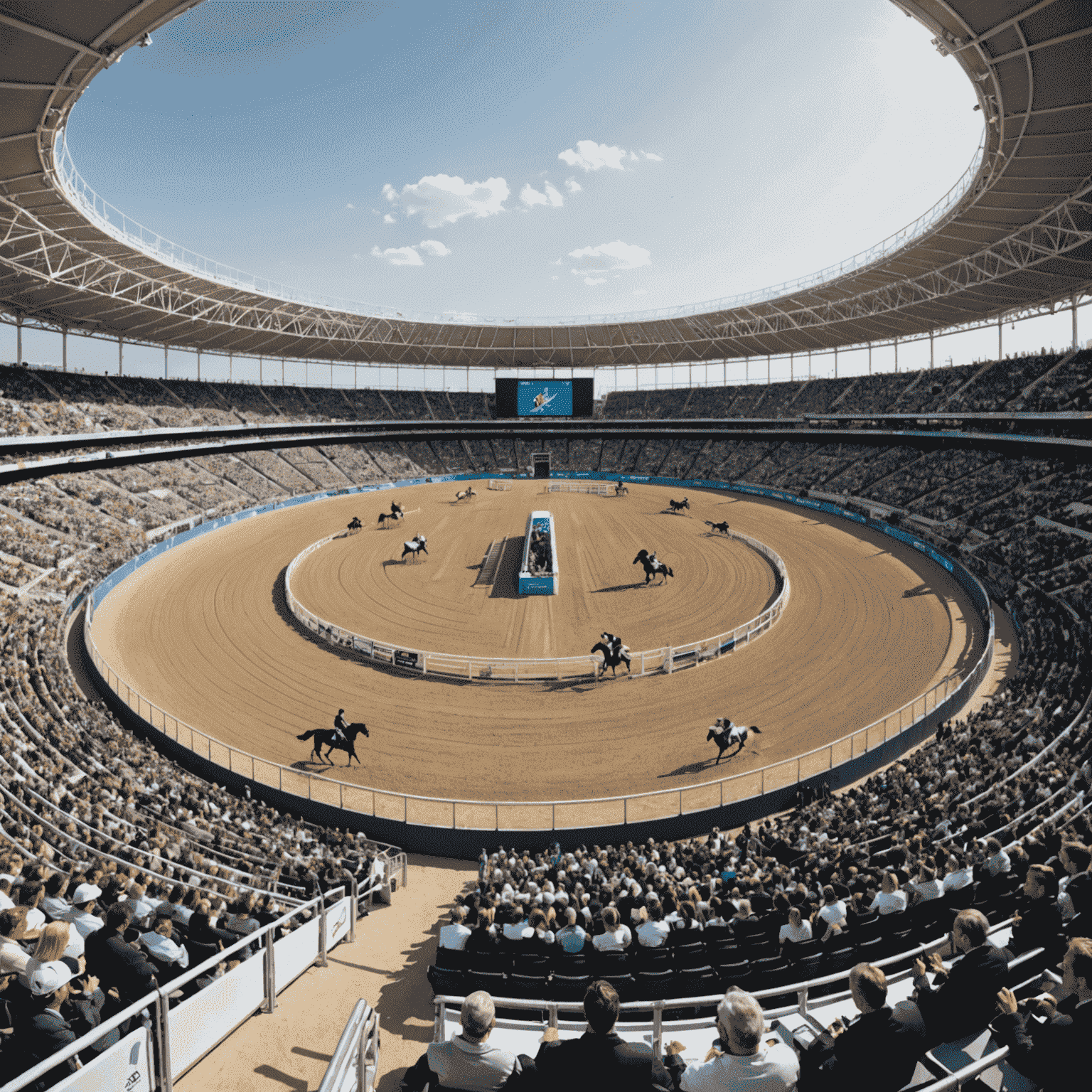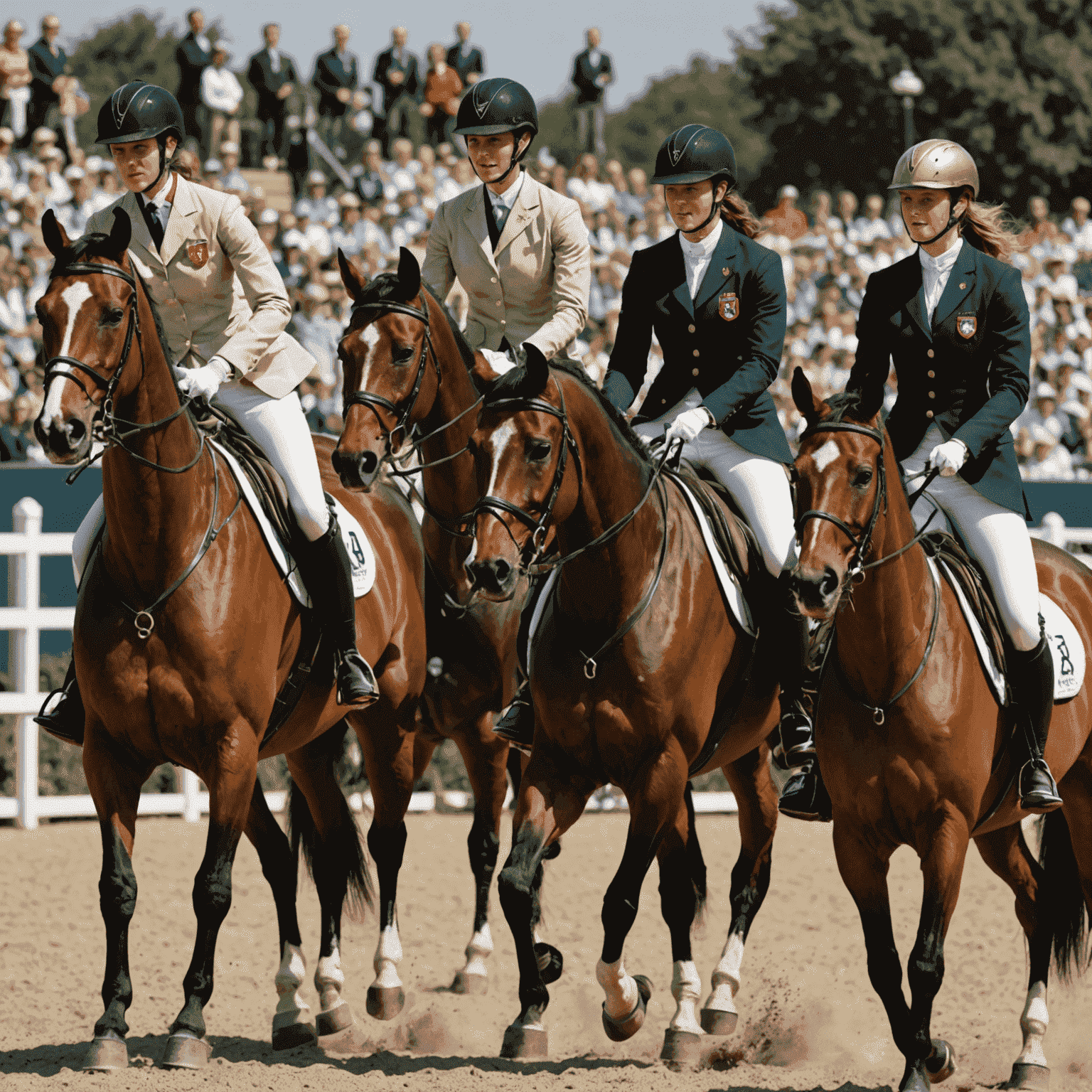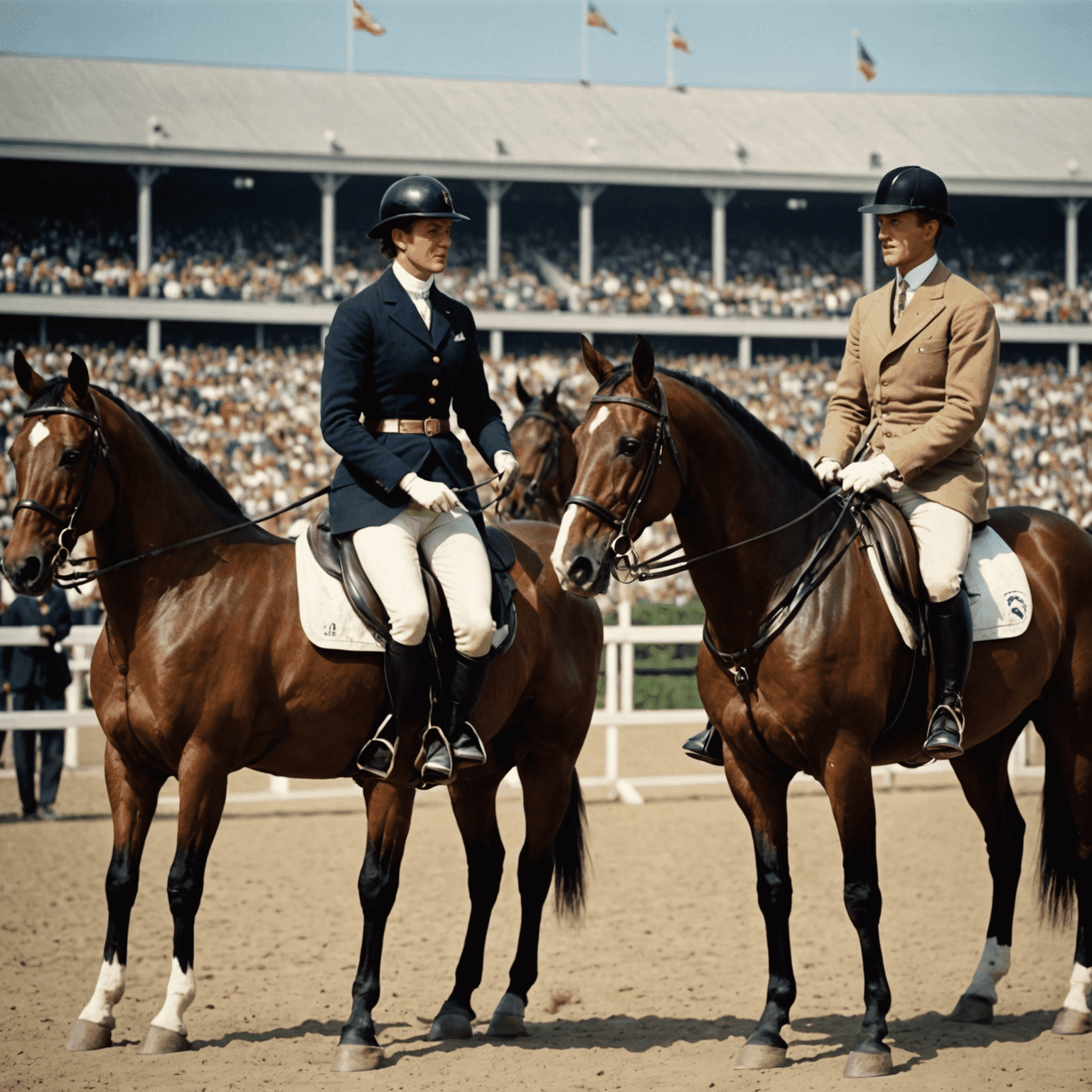Olympic Equestrian Events: A Journey Through Time

The history of equestrian sports in the Olympic Games is a testament to the enduring partnership between humans and horses, showcasing the evolution of riding from ancient warfare to modern competitive excellence.
The Birth of Olympic Equestrianism
Equestrian events made their Olympic debut in 1900 at the Paris Games. However, it wasn't until 1912 in Stockholm that the sport became a regular feature of the Olympic program. This marked a significant milestone in the development of riding as a competitive sport on the global stage.
The Three Disciplines
Olympic equestrian competitions consist of three distinct disciplines, each testing different aspects of horsemanship:
- Dressage: Often described as "horse ballet," this discipline showcases the harmony between rider and horse through a series of predetermined movements.
- Show Jumping: A test of speed, power, and precision as horse and rider navigate a course of obstacles.
- Eventing: A comprehensive test combining dressage, cross-country, and show jumping, often referred to as the "equestrian triathlon."

Notable Milestones in Olympic Equestrian History
- 1952: Women were first allowed to compete in equestrian events, making it one of the few Olympic sports where men and women compete on equal terms.
- 1956: Due to quarantine regulations in Australia, the equestrian events were held separately in Stockholm, marking the only time in modern Olympic history that events were held on a different continent.
- 2012: Great Britain's Charlotte Dujardin and Valegro set new Olympic records in dressage, elevating the sport to new heights of performance.
The Evolution of Equestrian Competitions
Over the years, Olympic equestrian events have seen significant changes, reflecting the evolution of equestrian sport through the ages:
- Improvements in horse breeding and training techniques have led to higher levels of performance.
- Advancements in equipment and technology have enhanced both safety and competitive standards.
- Changes in scoring systems and rules have made the sports more accessible to spectators and fairer for competitors.

Great Riders Who Shaped Olympic Equestrianism
The Olympic equestrian stage has been graced by numerous legendary riders who have left an indelible mark on the sport:
- Hans Günter Winkler (Germany): Won seven Olympic medals across six Games, including five golds.
- Reiner Klimke (Germany): A dressage master who earned six gold medals and two bronze across six Olympics.
- Isabell Werth (Germany): The most decorated Olympic equestrian of all time, with six gold medals and four silvers in dressage.
The Future of Olympic Equestrian Sports
As we look to the future, Olympic equestrian events continue to evolve, embracing new technologies and addressing concerns about animal welfare. The sport remains a testament to the unique bond between humans and horses, celebrating the pinnacle of equestrian excellence on the world stage.
The history of Olympic equestrian events is not just about competition; it's a narrative of partnership, skill, and the timeless appeal of horsemanship. As the sport continues to develop, it honors its rich past while galloping towards an exciting future in the Olympic arena.